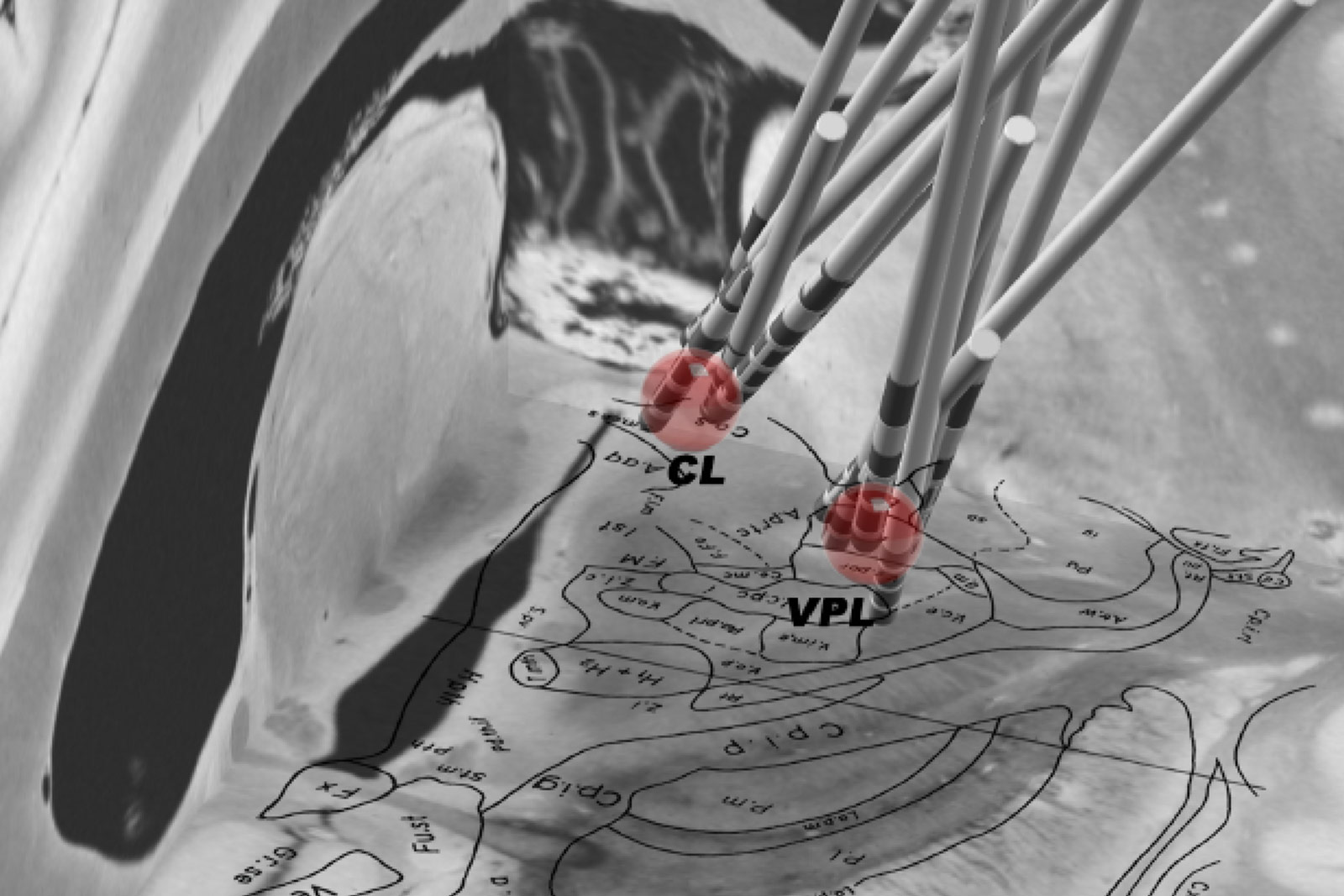In a new trial, Dr. Andreas Nowacki is investigating for the first time the effect of a new form of deep brain stimulation known as burst stimulation. The research project, scheduled to run for 4–5 years, will start in September 2022 and aims to determine whether the effect of burst deep brain stimulation is equivalent to or even superior to that of classic deep brain stimulation in relieving nerve pain.
Neuropathic pain syndrome
After a stroke, up to 10% of all patients develop chronic pain, some of which is very intense and often leads to a high level of suffering. This neuropathic pain is a result of damage to sensory nerve structures. For this reason, neuropathic pain often cannot be adequately treated with conventional therapies and medications.
Deep brain stimulation
Deep brain stimulation is an alternative treatment method for those affected. In this procedure, electrodes are implanted in specific anatomical structures of the brain to deliver therapeutic electrical impulses. Although this therapy often achieves significant pain relief, unfortunately, despite an initially good response, many patients gradually experience a return of pain to the initial level.
Burst deep brain stimulation
It is now hoped that burst deep brain stimulation, which, unlike classic tonic deep brain stimulation, does not involve the administration of continuous low-frequency electrical impulses but rather blocks of five short-duration electrical impulses with a very high frequency, will achieve better and longer-lasting results for pain patients.
Course of study
Andreas Nowacki, attending physician at the Department of Neurosurgery at Inselspital, Bern University Hospital, is leading this prospective, randomized crossover phase 2 study. Participants in the study will have electrodes implanted during a four-week trial phase. Both types of stimulation – burst stimulation and tonic deep brain stimulation – will then be tested in blocks of 10 days each, without the subject knowing which type of stimulation is currently being used. After evaluating the results, the subjects decide whether they have benefited sufficiently from one of the two types of stimulation and would like to use it as a long-term therapy. If so, an internal pulse generator is implanted. A final clinical check-up after 12 months verifies the long-term effectiveness and safety of the stimulation.

